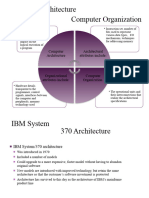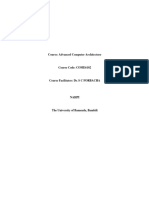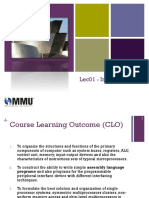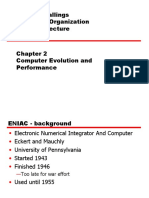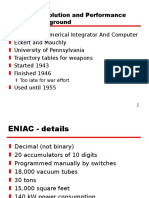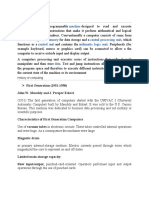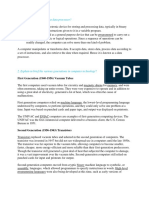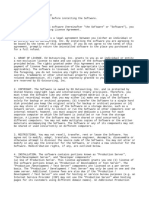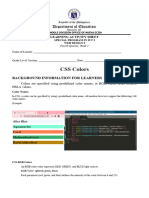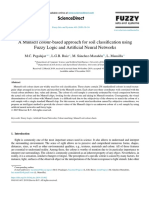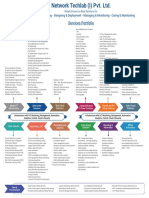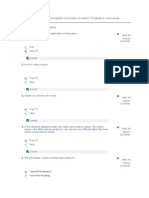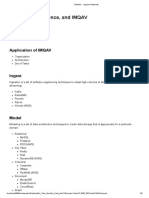0% found this document useful (0 votes)
14 views8 pagesArchi Notes
The document provides an overview of computer architecture, detailing its evolution from early digital computers like the ENIAC to modern microprocessors. It defines computer architecture and organization, discusses the historical progression through different generations of computers, and classifies computer architectures based on models and taxonomies. The intended learning outcomes include understanding the evolution of computer technology, defining key concepts, and familiarizing with classifications of computer architecture.
Uploaded by
zumbastudio736Copyright
© © All Rights Reserved
We take content rights seriously. If you suspect this is your content, claim it here.
Available Formats
Download as DOCX, PDF, TXT or read online on Scribd
0% found this document useful (0 votes)
14 views8 pagesArchi Notes
The document provides an overview of computer architecture, detailing its evolution from early digital computers like the ENIAC to modern microprocessors. It defines computer architecture and organization, discusses the historical progression through different generations of computers, and classifies computer architectures based on models and taxonomies. The intended learning outcomes include understanding the evolution of computer technology, defining key concepts, and familiarizing with classifications of computer architecture.
Uploaded by
zumbastudio736Copyright
© © All Rights Reserved
We take content rights seriously. If you suspect this is your content, claim it here.
Available Formats
Download as DOCX, PDF, TXT or read online on Scribd
/ 8

